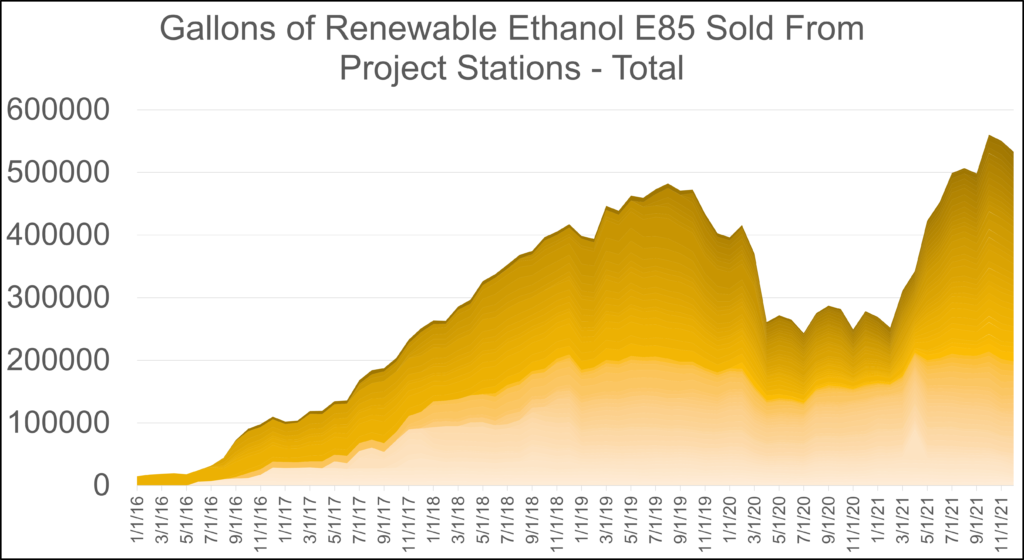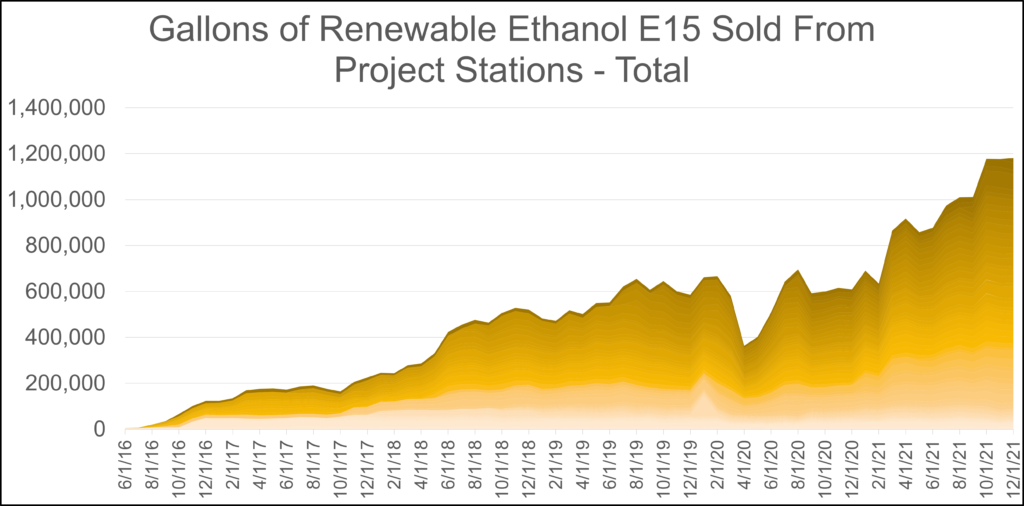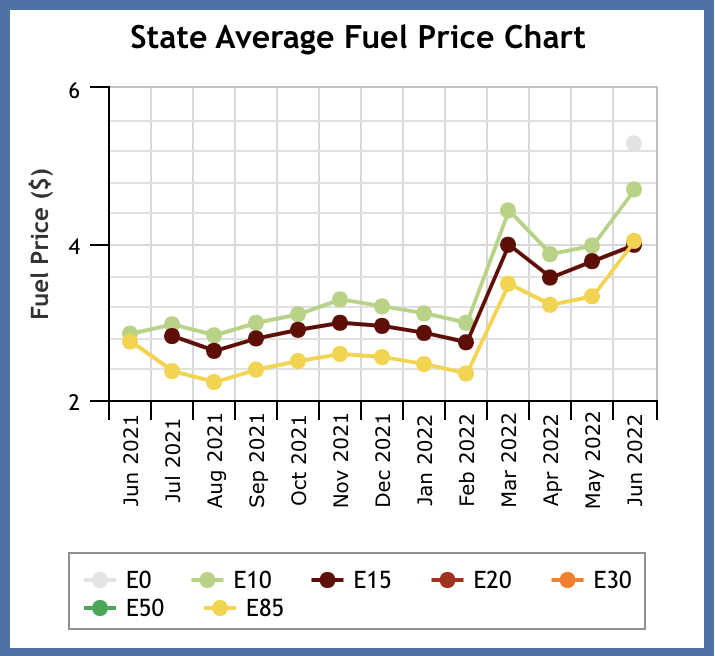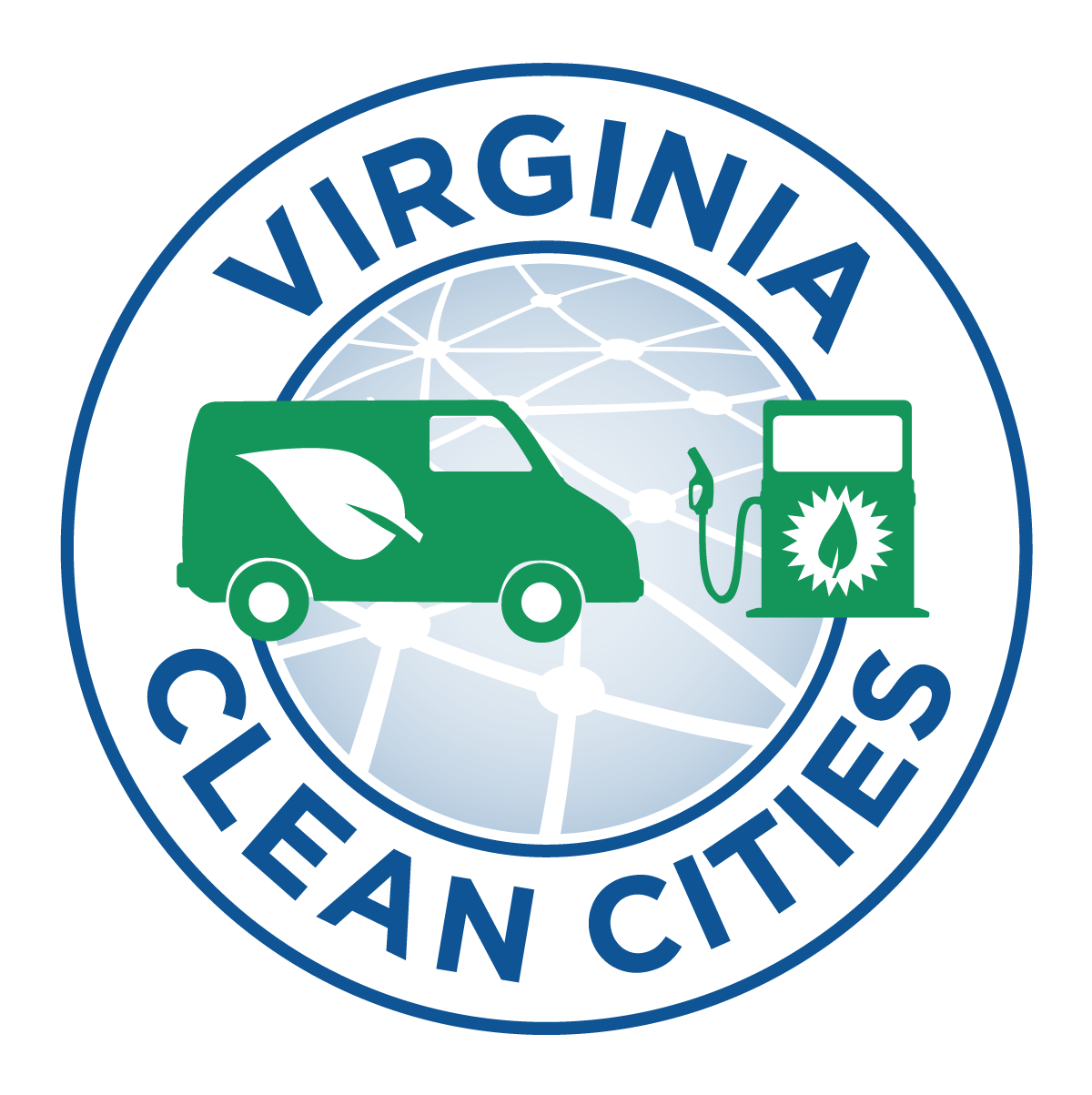In 2015, Virginia and Maryland acquired funding from the U.S. Department of Agriculture’s Biofuel Infrastructure Program in order to establish a Mid-Atlantic Biofuel Infrastructure Partnership (BIP) with the goal of installing biofuel fuel pumps at 40 fueling stations. Through the administration of the Virginia Department of Energy, and assistance from Virginia Clean Cities, the Mid-Atlantic Partnership was able to garner support from experienced retail businesses, like Protec Fuels and Sheetz, Inc., and state agriculture departments, energy offices, and grain associations. With these partnerships, the project worked to strategically place ethanol fueling sites where forecasted market growth, access, and increased use were likely. During the duration of the project, there were 40 different stations located across Maryland and the Commonwealth of Virginia that were installed with biofuel pumps, many of which were fitted with a larger number of biofuel fueling pumps than originally figured. After the completion of the project, biofuel station installations continued, amounting to a total of 56 stations in 2022 between the two states.
By the end of the project in 2018, monthly biofuel gallons sold reached 450,000 gallons of E85 and 525,000 gallons of E15, with 12 million gallons a year coming from project sites. This is monetarily beneficial for Virginia and Maryland farmers, as it results from nearly 2 million bushels of corn. The E85 alternative reduced 12,000 tons of carbon dioxide, with per-gallon emissions improvements expected to triple over the next decade, as compared to gasoline. Since 2018, monthly biofuel sales have continued to grow significantly. Below are graphs of updated figures of biofuel sales from project stations in Virginia and Maryland for E85 and E15 fuels up to the end of 2021.


Toward the end of 2021, monthly biofuel sales for E85 amounted to around 550,000 gallons and E15 sales amounted to almost 1,200,000 gallons.
An important objective of the Biofuel Infrastructure Partnership was to accurately reflect the true cost of ethanol at the pumps by decreasing prices for biofuel fueling and biofuel transportation across the board, allowing bulk delivery of fuels similar to what is experienced in the U.S. Midwest. To good effect, the project was successful at enlarging the biofuel industry with increased availability and lower costs at stations. Reduced costs are critical for biofuels acceptance, as ethanol contains less energy than gasoline and must cost less in order to meet the drop in fuel efficiency, yielding consumer break-even or fuel savings. State average prices on the e85prices.com consumer site show the Commonwealth in tandem with many other states who have achieved a 15% or greater discount on ethanol over E10 gasoline.

Virginia average fuel chart from e85prices.com shows a split emerging in Virginia’s retail average prices from gasoline prices, with a solid reduction in price seen by consumers. E85 is shown in yellow as a reduced price over gasoline. Currently, E85 is averaged at $4.04 and E15 at $3.99, while E10 is averaged at $4.79 and E0 at $5.29.
The Mid-Atlantic Biofuel Infrastructure Partnership (BIP) has enabled wider consumer fuel choices, expanding the availability of ethanol for most gasoline vehicles and presenting benefits that will be felt in the Commonwealth and Maryland for years to come. At the project’s start, there was only one E15-capable station, and now numerous project sites have E15 fueling technology which is compatible with more than 80% of vehicles in the region. While biofuels are currently available at a number of stations in the region, more than 450 stations in Virginia are needed in order to reach 10% market availability in the Commonwealth. To this end, additional stations must be built and increased consumer awareness is necessary to further the use of this clean domestic fuel. There is a wide potential for additional fuel sales beyond this project, as Holtzman and Sheetz are advancing some stations with private investments, and stations in Maryland are currently being built, supported by their state’s infrastructure funding programs. To learn more about this project visit our webpage with a full report at Virginia Clean Cities.
